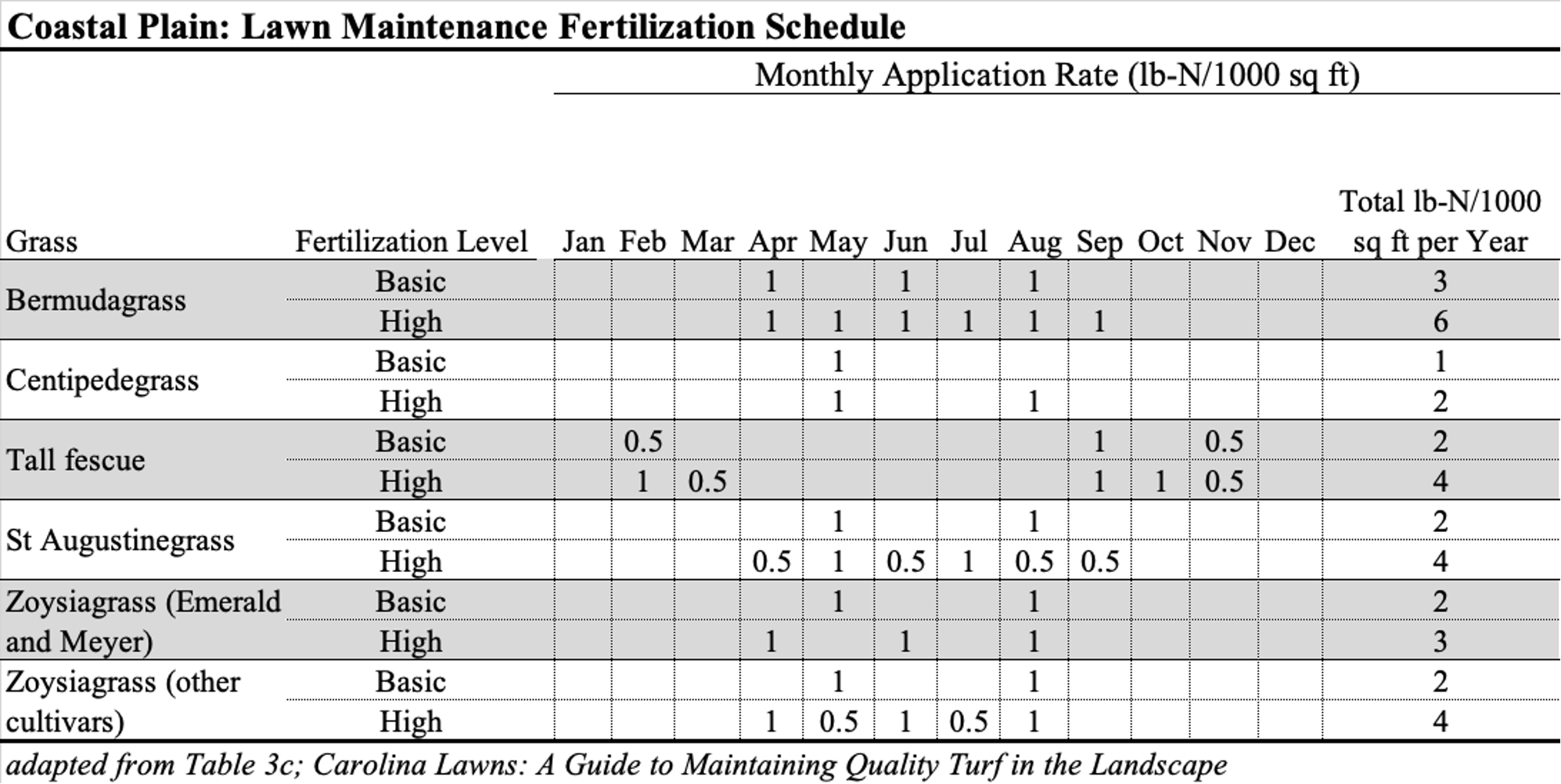Maintaining the Fertility of Your Coastal Plain Lawn
go.ncsu.edu/readext?989063
en Español / em Português
El inglés es el idioma de control de esta página. En la medida en que haya algún conflicto entre la traducción al inglés y la traducción, el inglés prevalece.
Al hacer clic en el enlace de traducción se activa un servicio de traducción gratuito para convertir la página al español. Al igual que con cualquier traducción por Internet, la conversión no es sensible al contexto y puede que no traduzca el texto en su significado original. NC State Extension no garantiza la exactitud del texto traducido. Por favor, tenga en cuenta que algunas aplicaciones y/o servicios pueden no funcionar como se espera cuando se traducen.
Português
Inglês é o idioma de controle desta página. Na medida que haja algum conflito entre o texto original em Inglês e a tradução, o Inglês prevalece.
Ao clicar no link de tradução, um serviço gratuito de tradução será ativado para converter a página para o Português. Como em qualquer tradução pela internet, a conversão não é sensivel ao contexto e pode não ocorrer a tradução para o significado orginal. O serviço de Extensão da Carolina do Norte (NC State Extension) não garante a exatidão do texto traduzido. Por favor, observe que algumas funções ou serviços podem não funcionar como esperado após a tradução.
English
English is the controlling language of this page. To the extent there is any conflict between the English text and the translation, English controls.
Clicking on the translation link activates a free translation service to convert the page to Spanish. As with any Internet translation, the conversion is not context-sensitive and may not translate the text to its original meaning. NC State Extension does not guarantee the accuracy of the translated text. Please note that some applications and/or services may not function as expected when translated.
Collapse ▲Even though it’s only the end of February, it’s that time of year again to think about your summer lawns.
NC State University has multiple resources to help you make good landscaping decisions regarding your lawns. One valuable resource is the Carolina Lawns: A Guide to Maintaining Quality Turf in the Landscape, which provides an in-depth description of the information outlined in this article.
For this article, we’ll focus on the timing and application of maintenance fertilizer to your lawns.
Fertilization
A soil test should be made at least every two to three years to determine the amounts of lime, phosphorus, and potassium your established lawn needs. A complete fertilizer with an N-P-K ratio of 4:1:2 or 4:1:3 can be used instead of a soil test, but it is a poor substitute. Please contact your North Carolina Cooperative Extension Center for directions on taking soil samples in your lawns.
Determine the amount of fertilizer, ratio of nutrients or fertilizer elements, and time of application based on the grasses being grown.
Most soils in North Carolina are acidic and often require the application of lime to sweeten the soil. For most turfgrasses, except centipedegrass, soil pH should be between 6.5 and 7.0 for optimum nutrient availability. Centipedegrass grows best with more acidic soil with a pH close to 5.5. Lime may be put on at any time during the year. Winter is usually best, however, because there is less traffic. Gentle winter rains minimize runoff, and alternate freezing and thawing help incorporate lime into the soil.
Fertilizers and lime should be applied uniformly with a centrifugal (rotary) or drop-type spreader. Apply half the fertilizer in one direction and the other half moving at right angles to the first pass to ensure uniform coverage.
Below is the general suggested recommendation for the fertilization schedules for typical grasses grown in lawns in the Coastal Plain region.
I also encourage you to look at the various management and maintenance calendars for your cool- and warm-season lawns.
Tall Fescue and Kentucky Bluegrass
Tall Fescue, Hard (Fine) Fescue, and Kentucky Bluegrass
If you have any questions, please reach out to us at the North Carolina Cooperative Extension – Bertie County Center at (252) 794-5317





